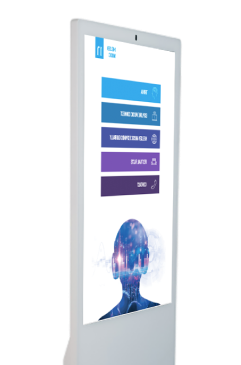

Event Solutions

Our Work

Why Healthcare Centers and Hospitals Need Digital Wayfinding
Why Healthcare Centers and Hospitals Need Digital Wayfinding
Navigating healthcare facilities can be a daunting task for patients, visitors, and even staff. Hospitals are often complex, multi-building environments with intricate layouts, leading to confusion and delays. This is where digital wayfinding solutions emerge as a game-changer, transforming the patient and visitor experience while improving operational efficiency. In this blog, we’ll explore the critical reasons why healthcare centers and hospitals should invest in digital wayfinding systems.
What is Digital Wayfinding?
Digital wayfinding refers to the use of technology, such as interactive kiosks, mobile applications, and digital signage, to guide people through a physical space. These systems provide dynamic directions, location-based navigation, and information in real-time, ensuring users can efficiently find their destination.
The Need for Digital Wayfinding in Healthcare Facilities
1. Improving Patient Experience
Navigating a hospital can be stressful, especially for those seeking urgent care. Digital wayfinding ensures:
- Stress Reduction: Easy-to-use interfaces provide step-by-step directions, reducing frustration and anxiety.
- Language Accessibility: Multilingual support ensures inclusivity for diverse populations.
2. Reducing Appointment Delays
Missed or delayed appointments due to navigation issues can disrupt a hospital’s workflow. Digital wayfinding minimizes these issues by guiding patients directly to their destination, saving time for both patients and staff.
3. Enhancing Operational Efficiency
Lost patients often ask staff for directions, which diverts resources away from critical tasks. Digital wayfinding eliminates this distraction, allowing employees to focus on their primary responsibilities.
4. Promoting Contactless Navigation
In the post-pandemic world, reducing physical interactions is essential. Mobile-based wayfinding apps allow users to navigate hospitals without requiring face-to-face assistance, ensuring safety and convenience.
5. Streamlining Visitor Flow
Hospitals receive a significant number of daily visitors, from family members to delivery personnel. Digital wayfinding helps:
- Manage visitor traffic.
- Ensure they can locate specific wards, cafeterias, or meeting rooms efficiently.
Key Benefits of Digital Wayfinding Systems
1. Real-Time Updates
Hospital layouts often change due to renovations or emergency setups. Digital wayfinding systems can update routes and information in real-time, ensuring accurate guidance at all times.
2. Integration with Other Systems
Modern digital wayfinding solutions can integrate with electronic health records (EHRs), appointment systems, and parking management tools to offer a seamless user experience.
3. Accessibility Features
Digital systems can cater to individuals with mobility challenges, visual impairments, or other disabilities, ensuring equal access for all.
4. Cost Savings
While there’s an upfront investment, digital wayfinding reduces printing costs for maps and signage and lowers staffing needs for navigation assistance.
5. Data-Driven Insights
By analyzing user behavior and traffic patterns, hospitals can optimize facility layouts and identify high-traffic areas requiring operational improvements.
Applications of Digital Wayfinding in Hospitals
1. Interactive Kiosks
Placed in lobbies and key areas, these touchscreens guide users with maps, directories, and personalized routes.
2. Mobile Wayfinding Apps
Apps allow patients to pre-plan their routes from home and navigate seamlessly once they arrive at the hospital.
3. Digital Signage
Dynamic displays show maps, room numbers, and emergency alerts, offering real-time guidance.
4. Voice-Activated Assistance
For visually impaired users, voice-activated devices provide audio directions.
Real-World Success Stories
1. Boston Children's Hospital
Implemented interactive kiosks and mobile wayfinding, resulting in a 20% reduction in late appointments.
2. Cleveland Clinic
Deployed a comprehensive digital wayfinding system that integrated with parking management, reducing patient navigation time significantly.
The Future of Healthcare Navigation
Digital wayfinding is more than a convenience—it’s a necessity for modern healthcare facilities. As hospitals continue to expand and patient expectations rise, these systems will become integral to delivering exceptional care.
With features like real-time updates, multilingual support, and accessibility options, digital wayfinding improves the overall experience for everyone entering a healthcare facility. It’s time for hospitals to embrace this innovation and set a new standard in patient-centered care.
Conclusion
In today’s fast-paced world, healthcare centers and hospitals must prioritize efficiency, safety, and patient satisfaction. Digital wayfinding systems offer a powerful solution to address these challenges, enhancing navigation for patients and visitors while streamlining operations.
Investing in digital wayfinding isn’t just a technological upgrade—it’s a commitment to better healthcare delivery.